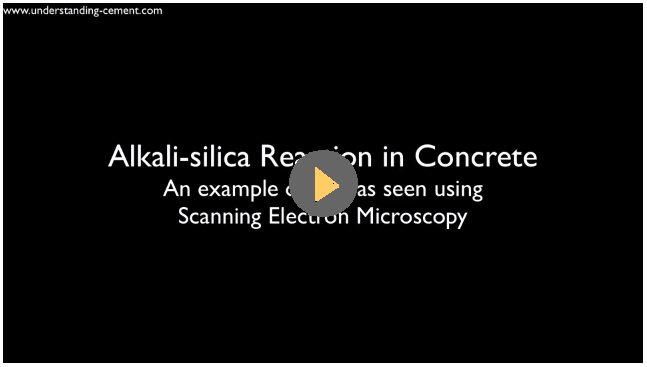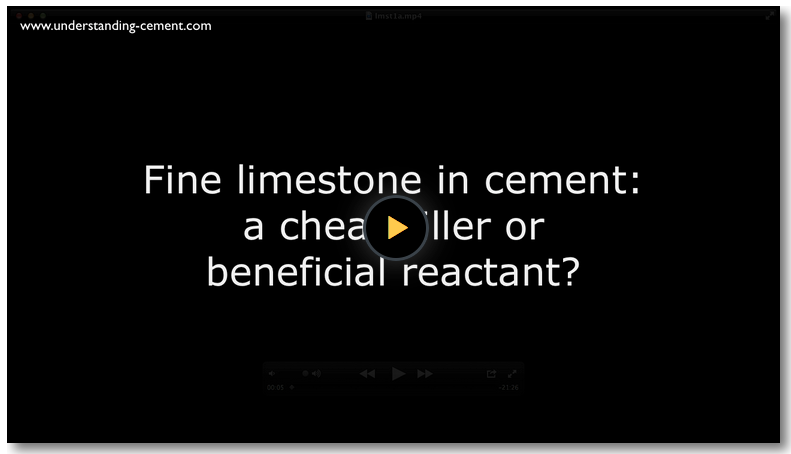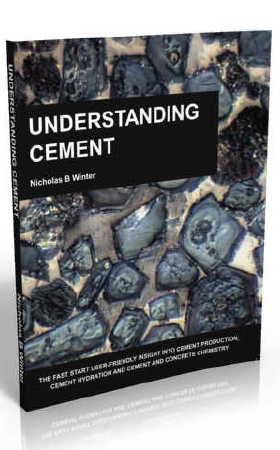Cement microscopy
Cement microscopy is a very valuable technique, used for examining clinker, cement, raw materials, raw feed and coal. Every stage of the cement manufacturing process can be improved through the use of a microscope.
Most cement microscopy is done using a petrographic microscope. Usually the specimen is a polished section of cement clinker examined using reflected light, although it may be a powder mount or a thin section examined using transmitted light.
A scanning electron microscope (SEM) may also be used. The combination of SEM with X-ray microanalysis (=EDX, EDS, EDAX) is very powerful as it enables the analysis of individual crystals or particles.
Details of the history of a clinker can be seen - raw material fineness and homogeneity, clinker composition, temperature profile in the kiln, for example. From this information, the likely performance of the cement can be predicted or the cause of production problems identified such as poor combinability, or low grindability.
Some cement manufacturers use microscopy as a technique for kiln control, with clinker samples being examined continuously. Other manufacturers use it occasionally on an 'as required' basis while some manufacturers never use it at all. (As cement microscopists ourselves, if we may let a little bias creep in here, we would say these cement producers who don't use microscopy are really missing out on making better cement at lower cost.)
Important characteristics the microscopist examines include:
- Overall nodule microstructure - dense, porous, dense micronodules interconnected by tenuous 'bridges'. This gives a broad relative indication of burning conditions.
- Alite crystal size - coarse alite may indicate a slow heating rate, excessive burning or coarse silica in the raw feed; silicate reactivity may be lower than it could be with improved burning conditions.
- Belite crystal size - larger belite crystals suggest longer time in the burning zone.
- Aluminate and ferrite crystal size - coarse flux phases suggest slow cooling; finer, intergrown, flux phases indicate faster cooling. Belite colour also indicates the cooling rate; fast-cooled crystals are clear while slower cooling allows impurities to crystallize out along lattice planes imparting a yellow colour.
- Large clusters of belite or free lime - these may indicate coarse particles in the raw feed.
- Overall distribution of silicates - ideally, belite crystals will be dispersed evenly throughout each clinker nodule, either as individual crystals or in small clusters. If large clusters of belite are present, burnability is likely to be less good and the clinker will be harder to grind.
Other clinker mineral characteristics can indicate very slow cooling, reducing conditions, an excess of alkali over sulfate in the clinker and other adverse conditions.
While clinker microscopy is more usually performed using a petrographic microscope, SEM/EDX of clinker, cement and of concrete and mortar is a very powerful technique and is often used to clarify the results of examinations using optical microscopy where the results were uncertain. For more on this, see our book: "Scanning Electron Microscopy of Cement and Concrete".
The International Cement Microscopy Association
(ICMA) holds an annual meeting, usually in the USA. The proceedings of the meetings are a valuable source of reference.
Check the Article Directory for more articles on this or related topics






